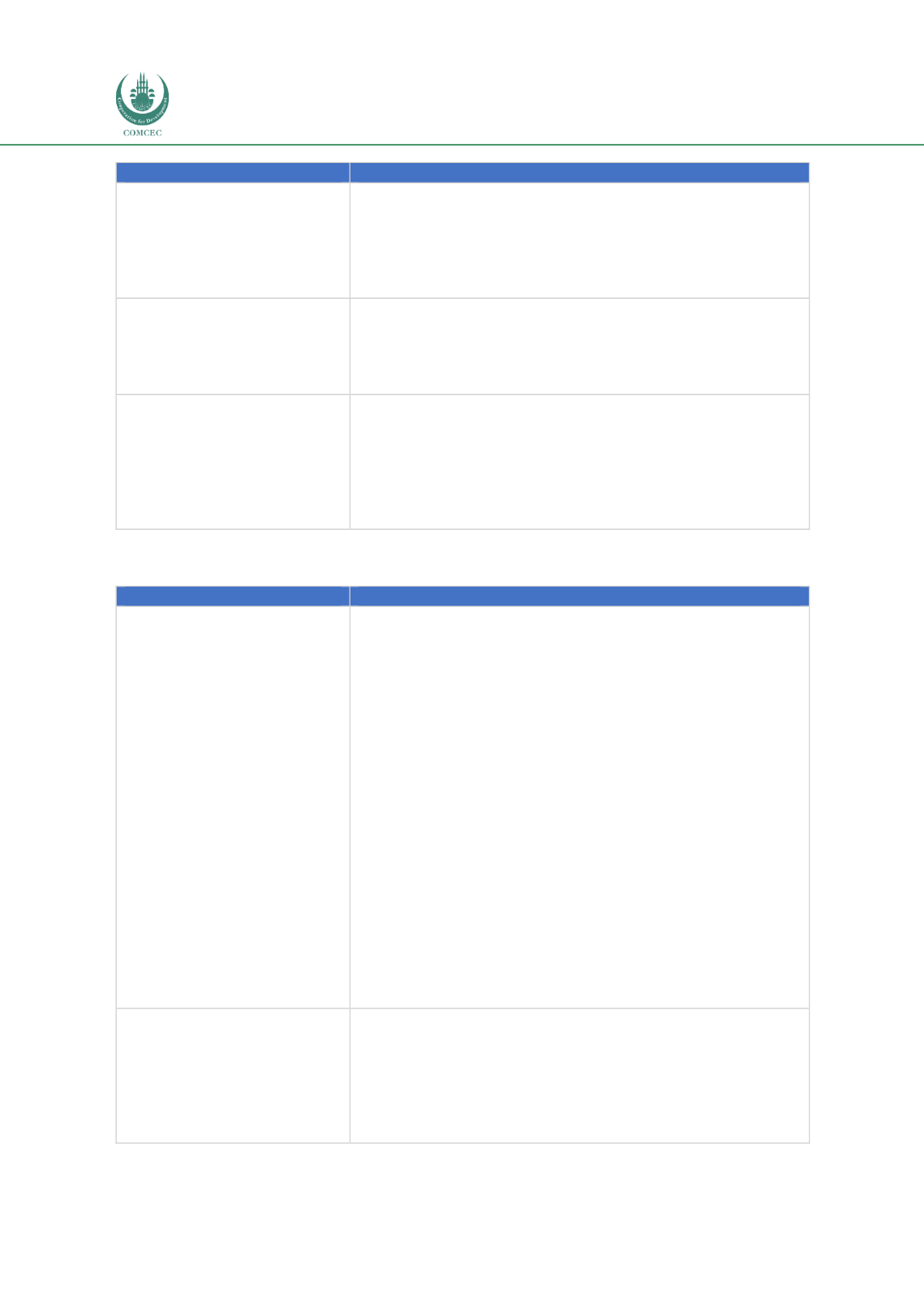

Islamic Fund Management
120
Issues and Challenges
Demand (Buy Side) Opportunities
Centralised KYC Organisation (CKO) with a centralised
database to record, maintain and verify the registration of
investors. The SECP’s issuance of Centralised KYC
Organisation Rules 2017, under which CKO licensing has
been granted to the NCCPL, is expected to streamline the
consolidation of KYC process for all AMCs.
4.
Taxation issues and
challenges
The limit of a four-year holding period for CGT should be
abolished to attract more investors to mutual funds.
Grant more tax incentives to investors to promote long-
term savings and investments, instead of the current
practice of limiting it to two years.
5.
Capital protection in
National Savings Scheme
The government should reconsider the policy of
guaranteeing capital and providing higher returns under
the National Savings Scheme, as it would hinder the growth
of the overall fund management industry. Investors would
prefer to invest in this scheme instead of Islamic funds
which are more risky and may yield lower returns due to
additional expenses incurred by the funds.
Sources: MUFAP (2017), SECP (2016), ISRA
Table 4.17: Recommendations on Improving Supply (Sell Side)
Issues and Challenges
Supply (Sell Side) Opportunities
1.
Limited Shariah-compliant
investment avenues
Introduction of short-term Islamic money market
instruments such as Shariah-compliant T-bills and other
similar government instruments.
Improving more transparency and good governance of
Modarabas by promoting mergers between small
companies. In addition, regulation on Modarabas can be
further enhanced by either of the following:
-
Increasing the limit on capital for the establishment or
operation of a
modaraba
company.
-
Increasing supervision to ensure compliance with
regulations.
This would eliminate the trust deficit that
modarabas
face,
thus creating more avenues for investible assets.
Deepening the Islamic domestic debt market by getting
more corporates to issue sukuk. However, this should be
preceded by long-term sovereign sukuk for benchmarking
and price discovery.
Realignment and consolidation of various occupational
savings, pension and retirement schemes in terms of their
investment avenues and criteria.
2.
Limited product
innovation
Creating an enabling framework for the introduction of
Islamic ETFs through:
-
The amendment of some regulations pertaining to
authorised participants and market makers: to allow
AMCs to invest in ETFs and a constituent basket of
securities; to enable banks and DFIs to act as
authorised participants or market makers; exposure
















